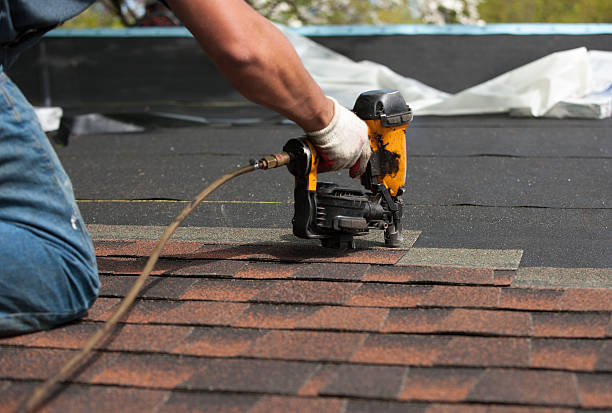Welcome to
On Feet Nation
Members
-
geekstation Online
-
jack Online
-
Blog Posts
What You Didn't Know About Dewalive
Posted by geekstation on February 23, 2025 at 12:54am 0 Comments 0 Likes
Asphalt Providing
Via driveways in order to airport parking quite a lot, GoHmann Asphalt produces durable plus visually appealing making solutions.
Asphalt Maintenance plus Upkeep
Standard maintenance… Continue
Why Opt For a Skilled Local Roofing Company in San Antonio, TX?
Posted by Kyler Werner on February 23, 2025 at 12:07am 0 Comments 0 Likes

San Antonio individuals know the usefulness of a sturdy and trustworthy roof. The Texas heat energy, powerful winds, and occasional hails can take a toll on any sort of roofing system. Choosing a knowledgeable regional roofing company makes certain high-grade service, components fit to the location, and long-lasting resilience. Whether you need a San Antonio roof installation, fixing, or replacement, collaborating with a counted on professional assurances…
ContinueNavigating Cryptocurrency Risks and Challenges
Posted by shobha singh on February 22, 2025 at 11:59pm 0 Comments 0 Likes
Investing in cryptocurrencies presents unique opportunities but also introduces a distinct set of risks and challenges. Understanding these potential pitfalls is crucial for investors to safeguard their investments and strategically navigate the volatile landscape of digital assets.
Volatility is the hallmark of the cryptocurrency market, with prices subject… Continue
L.A. Witch 2025 Spring Tour Shirt
Posted by Mitul Hasan on February 22, 2025 at 10:44pm 0 Comments 0 Likes
https://www.pinterest.com/stesmith056/la-witch-2025-spring-tour-shirt/…
Continue
Top Content
The Role of Reflectors: Maximizing HPS Light Distribution
Knowledge HPS Develop Lights
HPS grow lights are a form of high-intensity release (HID) lighting, noted for their power to release intense mild in the red and yellow spectrum. They include a light that contains a combination of gases, including sodium and mercury steam, which, when ionized, generate the quality mild range necessary for plant growth.
How HPS Develop Lights Work
Gasoline Ionization: When an electric current moves through the lamp, it ionizes the gasoline combination, making a powerful release of light.
Spectral range of Gentle: HPS lights release a range rich in red and yellow wavelengths, which are important for both vegetative development and flowering phases of plant development.
Features of HPS Develop Lights
Effectiveness: HPS lights are more energy-efficient compared to some old-fashioned lighting places like incandescent bulbs.
Growth and Flowering: They shine in supporting flowering and fruiting phases due to their high output of red and yellow mild, which crops need for photosynthesis.
Cost-Effective: HPS lighting techniques are fairly inexpensive and provide a great balance of mild power and cost.
Longevity: HPS lamps have a relatively long life, this means they don't must be replaced as usually as different lighting options.
Common Use: HPS lights have a lengthy history of successful use in horticulture, making them a tried-and-true selection for interior growers.
Purposes of HPS Develop Lights
Interior Garden: HPS lights are widely used in interior farming installations, letting crops to thrive in spots with restricted normal light.
Greenhouses: They're employed in greenhouses to complement normal mild and increase the growing season.
Industrial Expansion: HPS lights are common in industrial horticulture, especially for crops like tomatoes, peppers, and marijuana, where robust flowering and fruiting are essential.
Supplementary Lighting: In regions with reduced sunlight, HPS lights are utilized as supplementary lighting for outside crops.
Research and Studies: HPS grow lights are instrumental in scientific study and controlled tests for plant development and development.
Criteria for HPS Develop Lights
Temperature Emission: HPS lights create a substantial amount of temperature, that may influence the temperature in your growing space. Adequate ventilation and cooling techniques may be necessary.
Power Usage: While more energy-efficient than some alternatives, HPS lights aren't as efficient as newer systems like LED grow lights.
Variety Limits: HPS lights have limits inside their mild range, which can perhaps not cater to all plant development phases and forms of crops.
Conclusion
High-Pressure Sodium (HPS) grow lights have already been a reliable selection for interior led vs hps
and greenhouse cultivation for all years. Their capacity to supply intense mild in the red and yellow range makes them especially well-suited for flowering and fruiting plants. While newer lighting systems like LED grow lights have acquired acceptance because of their energy effectiveness and range modification, HPS lights continue to perform an invaluable role in horticulture, especially for growers buying cost-effective option to support robust plant development and yield. Knowledge the huge benefits and concerns of HPS grow lights is required for anyone venturing into the world of interior farming or industrial cultivation.
© 2025 Created by PH the vintage.
Powered by
![]()
You need to be a member of On Feet Nation to add comments!
Join On Feet Nation